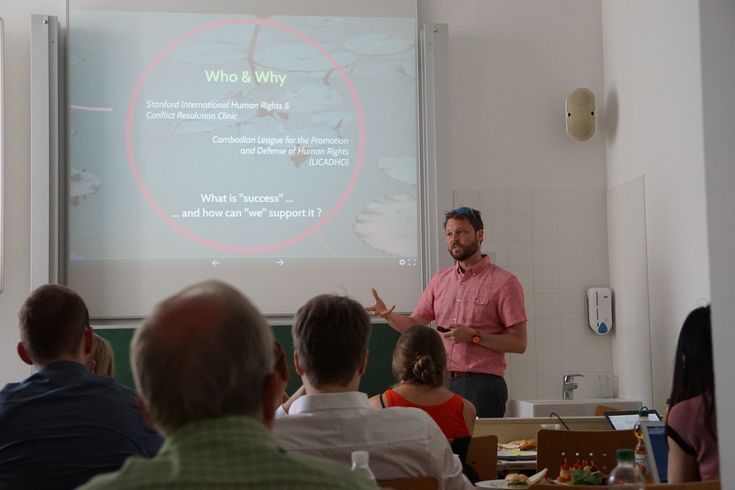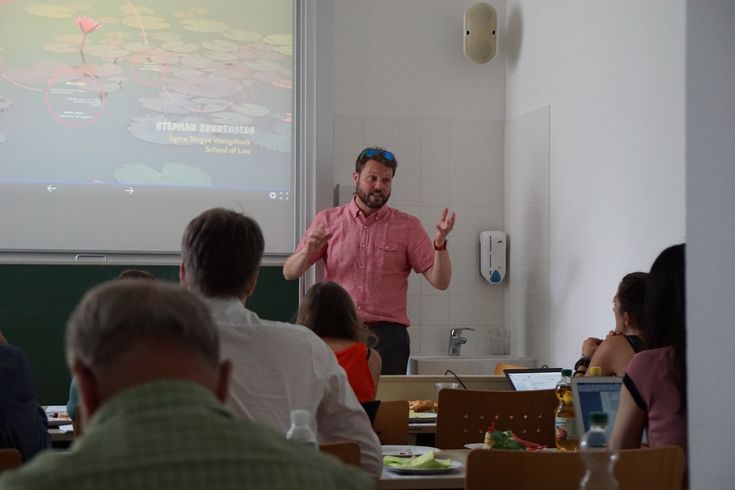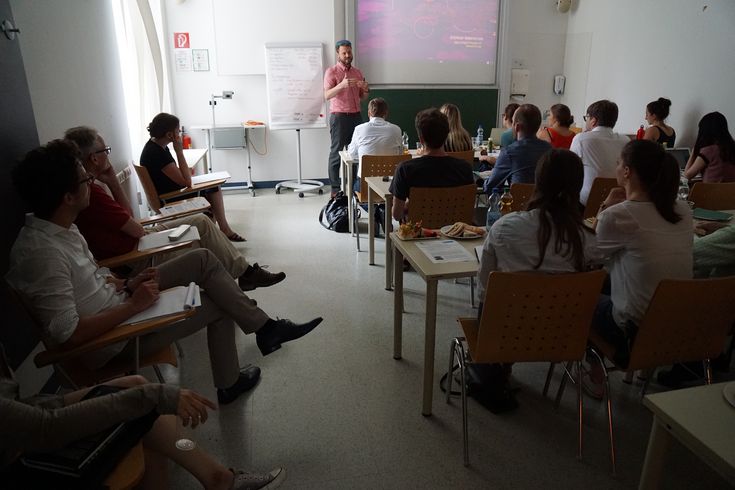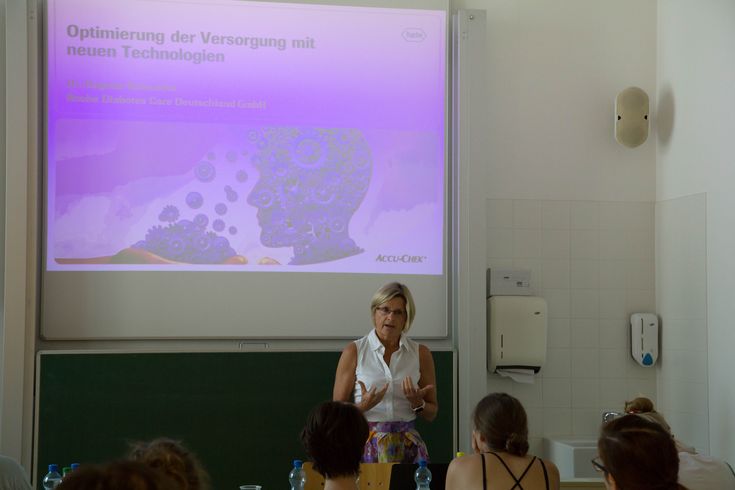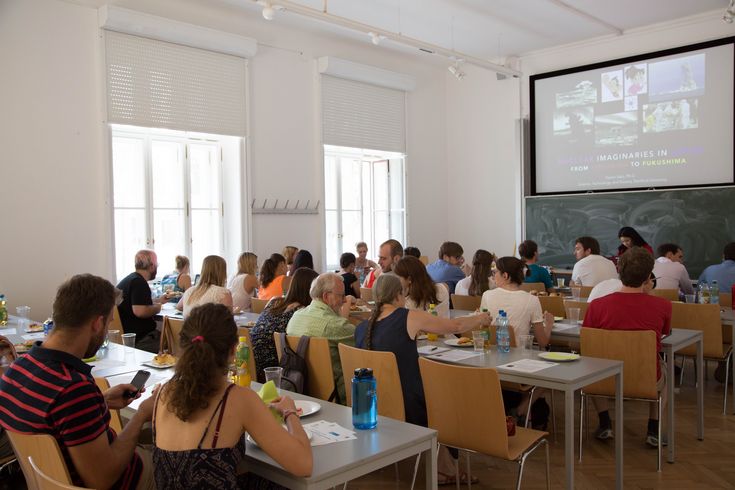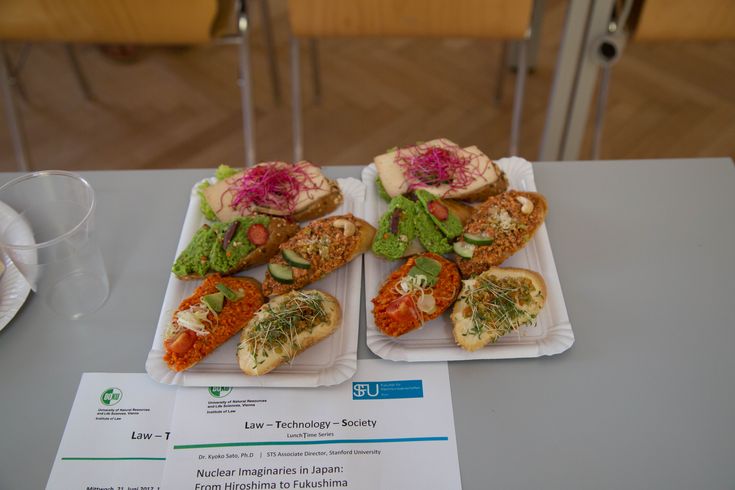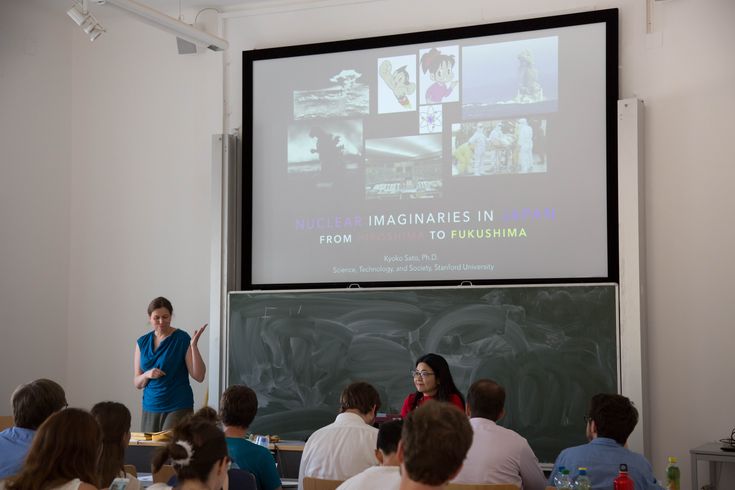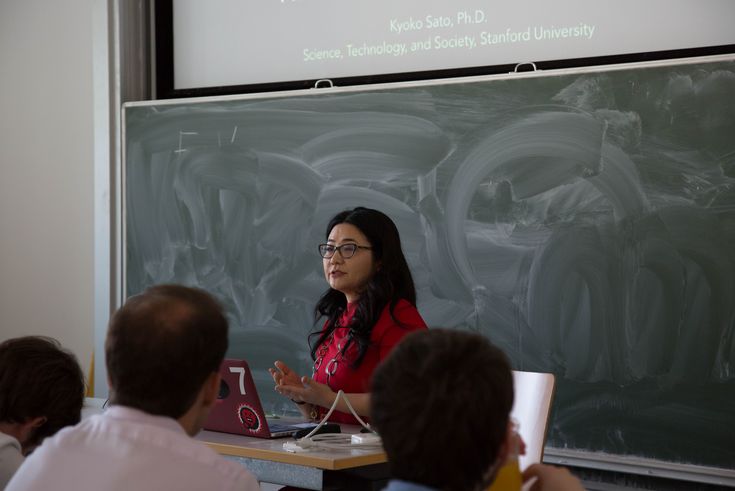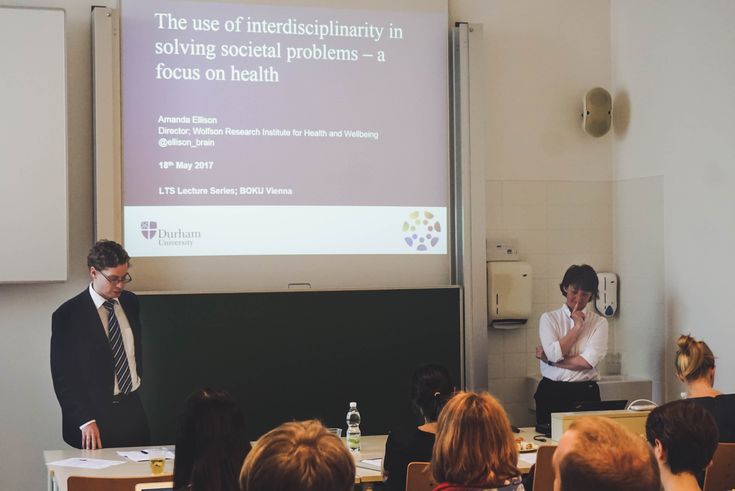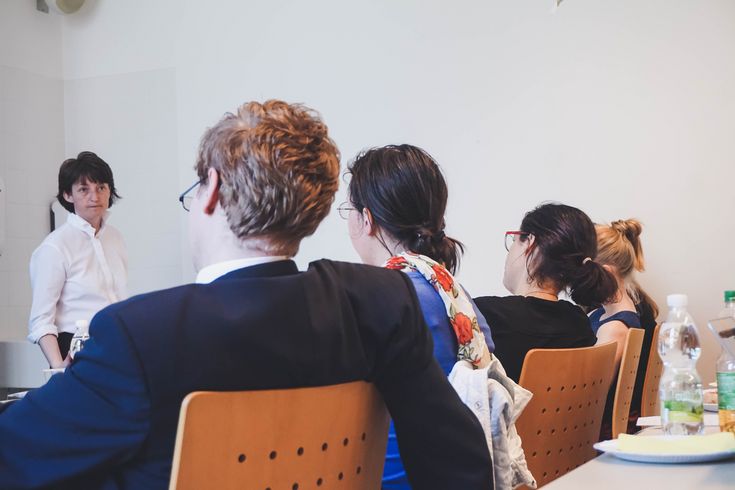Community Mobilisation Strategies in Cambodia
29.06.2017 At the last LunchTimeSeries on Law, Technology and Society (LTS), Stephan Sonnenberg, JD, talked about ‘Community mobilisation strategies in Cambodia’. Currently, Mr Sonnenberg works as the Associate Dean of Experiential Education and Director of the ADR Clinic at Bhutan’s first law school, the Jigme Singye Wangchuck School of Law. Before that, among other occupations, he supervised a research initiative in collaboration with LICADHO, the Cambodian League for the Promotion and Defense of Human Rights.
The team around Mr Sonnenberg, coming from the International Human Rights and Conflict Resolution Clinic at Stanford, focused on finding models for successful mobilisation strategies in Cambodia. Realising that international aid often leads to an unwanted decrease in community-generated activity, they tried to figure out how NGOs could provide support without undermining community structures.
As an introduction, Mr Sonnenberg gave a brief overview of Cambodian history, which is deeply scarred by the reign of the Khmer Rouge (1975 – 1979). Today considered genocidal, this regime disrupted Cambodian society and led to death and displacement throughout the country. Many political and economic developments can be tracked to decisions made by the Khmer Rouge, such as the resettling of urban population to agrarian environments.
Mr Sonnenberg continued by focusing on three main human rights issues: labour and workers’ rights, land rights and corruption. Workers’ and labour rights show tight connections to the international garment industry. Many desperate people – mostly young women – coming from rural areas to the capital city of Phnom Penh are exploited in the factories of global players such as H&M, C&A and many more. Underlying issues concerning land rights are partly rooted in the displacement undertaken by the Khmer Rouge. Most people do not hold land titles, and even if they do, they are often not recognised. This enables so-called ‘land grabbing’ by foreign investors, which is most of the time connected to the third issue – corruption.
Dealing with these three main challenges, Mr Sonnenberg and his team tried to figure out what made some community mobilisations more successful than others. Through a snowballing system, they worked through a number of groups that are considered ‘successful’ by fellow Cambodians. This approach was especially important, as many NGOs do not share the same understanding of ‘success’ with local communities. This communicational snowballing enabled the team to distinguish six main factors that the ‘successful’ communities had in common.
Those factors were (1) importance of internal organisation, (2) good use of ‘loud’ protests, (3) diversity of tactics, (4) mobilisation efforts that don’t remain purely adversarial to the political establishment, (5) communication and messaging, and (6) clear willingness to reject offers of aid from the outside.
The factor most important for the future work of NGOs is the clear willingness to reject offers from outside. Mr Sonnenberg emphasised that many communities have their ‘warning flags go up’ as soon as NGOs try to approach them. Experience has shown that although the NGOs’ intentions are only the best, this does not necessarily mean that they bring real aid to the community. Many people feel that their leaders become detached from the community, as they have to deal with a variety of issues to become a ‘trained donor-receiver’. The successful communities therefore have set up clear and crisp demands, which they have agreed upon even before NGOs approach them. This puts them in an empowered position and, through that, they can articulate their exact needs.
The main conclusion of the talk was that the best strategy was to implement a ‘messy mix of logically incoherent approaches’. This gives communities the capacity to develop strategies suiting their own needs. As a closing argument, Mr Sonnenberg stated that the solution was not about the specific type of support, but rather about how it is implemented.
The audience showed great interest in the topic, as could be seen during the subsequent discussion. The topics revolved around grass roots mobilisations, labour and workers’ rights, structural deficits favouring authoritarian tendencies, and the development of mobilisation strategies being influenced by impact from the outside.
You can find the 2015 paper by Stephan Sonnenberg, "Seeding the Ground: Promoting Community Empowerment in Cambodia", via the International Human Rights and Conflict Resolution Clinic at the Stanford Law School.
Annemarie Hofer, June 2017 You find the report here.
Optimising the Health Care Sector by using New Technologies
22.06.2017 Each year 415 million people suffer from diabetes – and the number is still rising. In 2040, the epidemic disease will affect a further 200 million people. In the face of the increasing number of patients, the need for action is urgent: Optimising the health care sector with the aid of new technologies has the potential to decrease both patients’ distress and health care costs. As part of the LunchTimeSeries on Law, Technology and Society (LTS), Dr Dagmar Kownatka gave an interesting lecture, which focused specifically on technological concepts that could improve the treatment of diabetes. Dr Kownatka is Head of Professional Relations, Scientific and Strategic Affairs at Roche Diabetes Care. Furthermore, she is a member of the European Innovation Partnership on Active and Healthy Ageing. As part of the European trade association MedTech Europe, Dr Kownakta is actively involved in the strategic development of new European directives.
When it comes to the optimisation of health care, three main strategies are important. First Dr Kownatka talked about the linked concepts of digitalisation and personalisation. Second, the speaker presented a model of Integrated Health Care. Finally, she underlined the importance of a Value-Based Health Care.
The main aim of digitalisation and personalisation is the development of a personalised therapy. Tailoring the treatment plan to specific needs and living conditions is important in order to be effective. Because in general, according to Dr Kownatka, the affected person spends more than 700 hours per month without accessing direct professional care for the disease, hence all instructions have to be readily understandable and realisable. In this regard, digitalisation of a patient’s health data could help to develop more effective medical care. Moreover, it could significantly reduce health care costs, which currently amount for diabetes care to 5 to 20 percent of the national health expenditure. With faster and clearer access to the patient’s data, physicians would reserve more time for physician-patient conversation.
According to Dr Kownatka, the Integrated Health Care model has particular importance. It refers to an interdisciplinary approach characterised by a high degree of interconnectedness and communication among different health professionals. What makes this concept unique is the sharing of information among team members related to the patient’s medical care. With the patient’s needs at the centre of attention, a continuous and coordinated treatment plan can be realised. Yet the multidisciplinary approach to health care requires a high level of communication and information.
Finally, Dr Kownatka challenged the traditional Volume-Based conception of the health care system. She underlined the significance of a Value-Based Health Care. Its overarching aim is the patient’s convalescence, which is determined by a range of predefined indicators.
From a legal perspective, the issues of data privacy and data protection are crucial: Ultimately, the (data) digitalisation allows access to the most intimate aspects of a person’s life. The closing discussion for this LTS underlined concern for transparency and data security. After all, health data are amongst the most sensitive personal information. Their long-term storage allows processing at a later time. In the worst case, they could be abused or manipulated for a cause that is currently unknown. Lisa Schranz, June 2017 You find the report here.
Nuclear Imaginaries in Japan: From Hiroshima to Fukushima
21.06.2017 As a part of the LunchTimeSeries on Law, Technology and Society (LTS) Dr Kyoko Sato, from the Stanford University, gave a lecture on 21 June 2017 concerning the relationship between Japan and nuclear technology. From the bombing of Hiroshima and Nagasaki in 1945 to the accident of Fukushima in 2011, the public and political opinion on nuclear technologies went through a change. For many Japanese, including Dr Sato, a nuclear catastrophe as happened in Fukushima seemed inconceivable. However, since the atomic disaster in 2011, the risks of atomic energy came shockingly to the minds of the islands’ population. First, Dr Sato analysed developments in the years following World War II. The occupying powers of Japan introduced a strict censorship. It was allowed to make negative statements neither about the allied powers nor the impact of the atomic bombs. Therefore, it was also prohibited to show pictures of survivors of the nuclear attacks. For a long time, the US government denied the effect of radiation on humans and presented the bombings as a peace-building technique. The propaganda and censorship emphasised a positive picture of nuclear energy among the Japanese population. Even after the departure of the occupying troops in 1951, the government kept marginalising critical voices, claiming that they wanted to prevent development and innovation. The Japanese government was very eager to turn all negative aspects of the catastrophe into positive ones. The public therefore did not see the bomb as a disadvantage but rather as a solid base for atomic energy innovation. Next, Dr Sato questioned developments in the ‘50s and ‘60s of the 20th century. The Japanese population as well as the political powers did indeed reject the military use of nuclear material. However, the civil and economic use of this technology was seen as the quintessential future innovation. Companies and politicians were always careful to differentiate between military and peaceful use of radioactive material. Even the Japanese word for radiation had two different meanings depending on the context. The strong effort to push atomic energy forward caused the impression that the country was fully dependent on this form of energy supply. Even though the ban on worldwide nuclear weapons testing as well as the disaster at Chernobyl led to short disruptions, the strong pro-nuclear propaganda prevented a serious and effective debate about atomic energy. It was not until the catastrophe of Fukushima that a new political discussion emerged. The disaster showed the population the risks and negative effects of a nuclear energy supply for the first time. In a cynical twist, the areas affected most were those which did not enjoy the financial advantages of nuclear energy economics. After the accident, nuclear power plants throughout the country were required to shut down their facilities. As a result, Japan had to get on without nuclear electricity. Many Japanese people realised that – contrary to general assumptions – it is possible to provide enough electricity without atomic energy. Despite the high tangible and intangible burden caused by the accident, nuclear proponents still exert pressure. For example, it is still frowned upon to speak about cancer caused by radiation. As a result, compensation payments for former workers of nuclear power plants were postponed several times. Additionally, the government marginalised the effects of the radiation and released radiationexposed areas for resettlement. Dr Sato saw the origin of the Japanese attitude towards atomic energy in the period of occupation. The self-censorship that followed as well as continuing propaganda in favour of this form of energy supply and divisions among nuclear opponents supported this development. Despite the strong influence of nuclear proponents and the positive attitude of the government concerning nuclear energy, Dr Sato hopes that critical voices become louder. Due to the avoidance of a public discussion, the interests of the nuclear industry are given priority. The Japanese population must therefore make a strong and transparent evaluation of whether the benefits of this technology outweigh the risks or vice versa. Otherwise no positive solution – for all involved – may be found.
Paula Resch, June 2017 You find the report here.
The use of interdisciplinarity in solving societal problems – a focus on health
18.05.2017 This semester’s ‘LunchTimeSeries on Law, Technology and Society’ (LTS) kicked off with an engaging lecture by Dr Amanda Ellison with the topic ‘The use of interdisciplinarity in solving societal problems – a focus on health’ on 18 May 2017. With her humorous and buoyant manner, Ellison carried the audience and made sure to leave no question unanswered.
Amanda Ellison, associated professor at the University of Durham in England, is a neuroscientist who began her career with a PhD from Trinity College in Dublin followed by a postdoctoral fellowship at Oxford University. Since 2016, she has been the director of the Wolfson Research Institute for Health and Wellbeing at Durham University. Interdisciplinarity plays a major role in the work of fostering and disseminating the wide range of research aimed at improving human health and well-being. Ellison’s approach to a well-functioning interdisciplinary working atmosphere is to address the beginning, the middle, and the end of problems. Therefore, it is essential to identify the potential possibilities to solve problems efficiently. Ellison introduced some projects, currently researched at Durham University, that are dealing with health from an interdisciplinary angle.
One of these projects is DREX (Durham Reading and Exploration Training), a computer-based programme for people dealing with homonymous visual field defects. Hemianopia, for instance, leads to partial blindness and difficulties in reading and overcoming simple situations in the patient’s everyday life. To date there has been no treatment or therapy. Therefore, Ellison and the psychology department at Durham University developed an app that can be used by patients on their own to rehabilitate their visual deficit. The interdisciplinary aspects of this programme are that not only can patients use the app for exercise, but family members, carers, and health care professionals also have access to the app’s data for assessing and spotting the patient’s progress. Hence, DREX can be called an interdisciplinary app promoting the development of visual awareness.
The Dread Risk is another project of Durham University in which the value of life and the question of whether one can put a price on health is examined. The value of a life is determined by how much it costs to keep somebody alive, thus by how much is paid for everyone in regard to health care and safety. In that matter, Ellison explained the importance of interdisciplinary work.
Further, Ellison pointed out the difference between pain sensation, pain perception, and pain treatment. First, she declared that pain itself is an important mechanism to protect the body and to detain from severe injuries. However, everyone experiences pain in a different way, and there are even people who do not feel any pain at all. Nowadays, it is a common practice to treat pain by using opiate drugs. Ellison questioned that practice by posing the fact that not just opiate drugs but also various physical and non-physical elements and techniques from different academic fields have an impact on pain reduction. Therefore, pain reduction could be pursued by more alternative methods than solely by the use of opiates.
In conclusion, it should be emphasised that interdisciplinary work means answering questions from various viewpoints using shared expertise. However, performing interdisciplinarity is a major endeavour for the majority of people, since not just the barrier of language but also the intricacy of the practices and methodologies that are used in the different academic disciplines often stand in the way. Interdisciplinarity does not come naturally to people; rather, it has to be exercised considerately and requires courage to look outside one’s particular box. Verena Reiter, May 2017 You find the report here.


